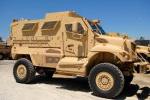Most of the design and engineering advances that created modern small arms came through the development of military weapons, both rifles like the Springfield 03 or handguns like John Browning’s Colt 1911. And whether it was the M-1 Garand that General Patton called the “greatest battle implement ever devised,” or the Winchester repeating carbine that the U.S. Cavalry carried against the Indians, it’s safe to say that guns played an important role in just about every war that America fought.
It should therefore come as no surprise that guns are once again playing an essential, if not a pivotal role in what is perhaps America’s longest-lasting war. I’m not talking about Iraq or Afghanistan, although both of those conflicts have dragged on far too long. I’m talking instead about America’s “culture” war for which guns and gun ownership have come to define both the ebb and flow of the conflict as well as the basic attitudes of both sides.
Guns were first tied to the culture war when Charlton Heston became NRA President in 1998. Heston and other members of his Hollywood generation began turning conservative when Ronald Reagan, won the Presidency in 1980. But while Reagan boosted conservative fortunes he was always ambivalent about the culture war; kept evangelicals at arm’s length, was never seen inside a church, and rarely, if ever, invoked the virtues and values of gun ownership or membership in the NRA. In fact, along with Jimmy Carter and Gerald Ford, Reagan sent a letter to the House of Representatives in 1994 advocating an assault-rifle ban that was enacted later in the year.
Until the 2008 election of Obama, the culture war embraced issues like abortion and gay rights, both of which took precedence over guns. And even though Bill Clinton blamed the 1994 Republican Congressional sweep and the 2000 defeat of Al Gore on the power of the NRA, the outcome of both elections couldn’t be tied specifically to anything having to do with guns.
The ascendency of guns in the cultural war didn’t reflect so much the growing power of the gun-owning lobby as it was the result of conservative shifts away from other issues for which they simply could not muster enough votes to win. On abortion, for example, the nation appears evenly split but Rowe v. Wade is now forty years old and as women continue to move forward in the workplace and the professions, a woman’s right to choose seems fairly secure. As for the gay issue, 19 states have now legalized same-sex marriage and last year the SCOTUS invalidated the 1996 Defense of Marriage Act which opens the door for many more states to lift their own gay marriage bans.
 So as the older, hot-button cultural issues gradually wither away (remember something called English as the official language?), gun ownership and gun “rights” move to center stage. And guns are a perfect means to build support for conservative cultural warriors because their ownership, after all, is enshrined in the most holy of all cultural holies, the Bill of Rights. Even the leader of the liberals, whether he means it or not, is forced to sing hosannas to the 2nd Amendment as his shock-troops prepare to do battle against the other side.
So as the older, hot-button cultural issues gradually wither away (remember something called English as the official language?), gun ownership and gun “rights” move to center stage. And guns are a perfect means to build support for conservative cultural warriors because their ownership, after all, is enshrined in the most holy of all cultural holies, the Bill of Rights. Even the leader of the liberals, whether he means it or not, is forced to sing hosannas to the 2nd Amendment as his shock-troops prepare to do battle against the other side.
The problem with cultural conflicts is they cannot be resolved with reference to facts. Because as Mary Douglas and Aaron Wildavsky pointed out long before the culture war rose to the level of conflict that we see today, people make decisions about things like gun ownership not because they understand or even care about whether a gun can or cannot protect them from harm, but whether ownership of a gun either supports or conflicts with their world view. If both sides in the gun debate don’t find a way to resolve their arguments by reconciling larger cultural issues, it will drag on the way the Chaco War dragged on between Paraguay and Bolivia over a border that neither country could even find.

Recent Comments